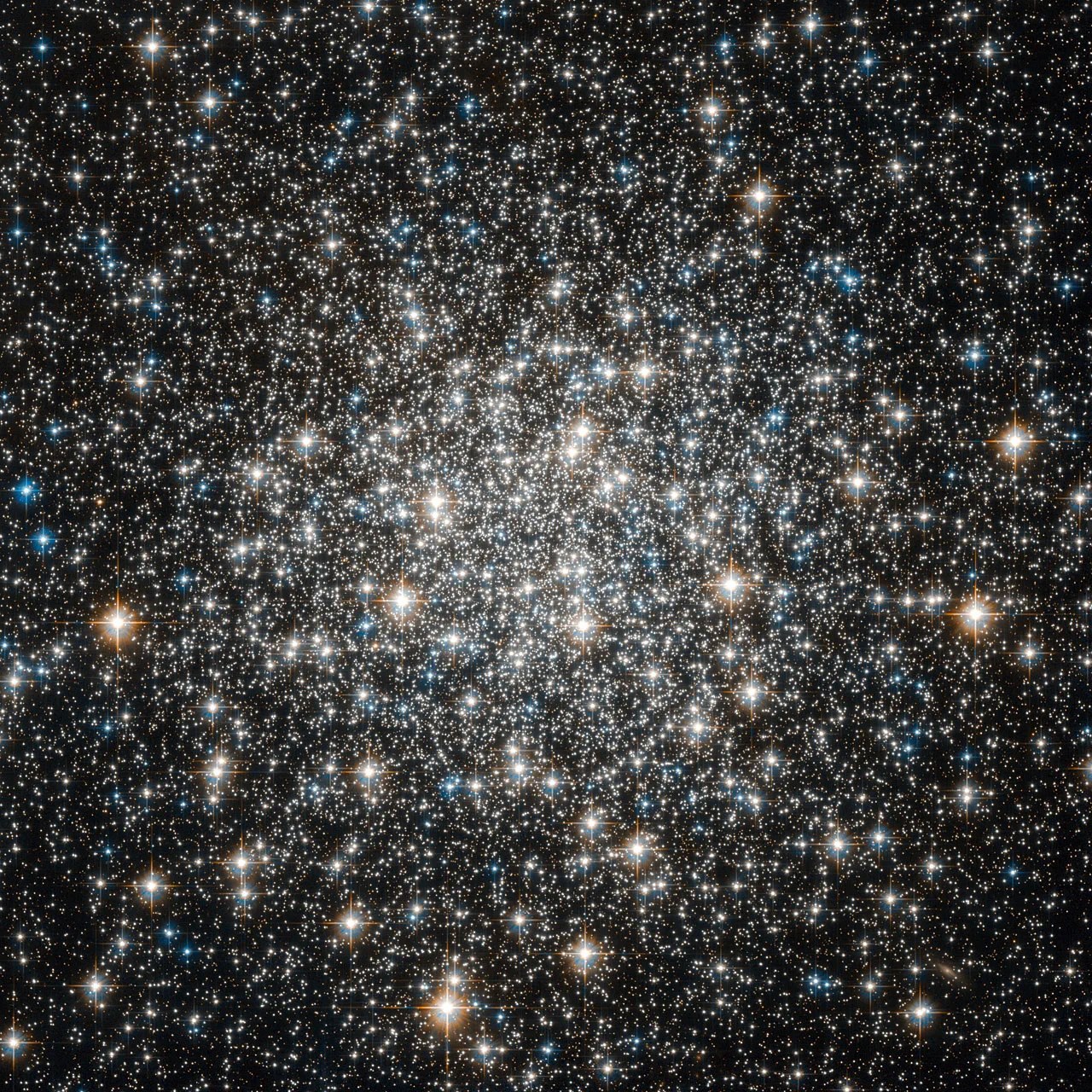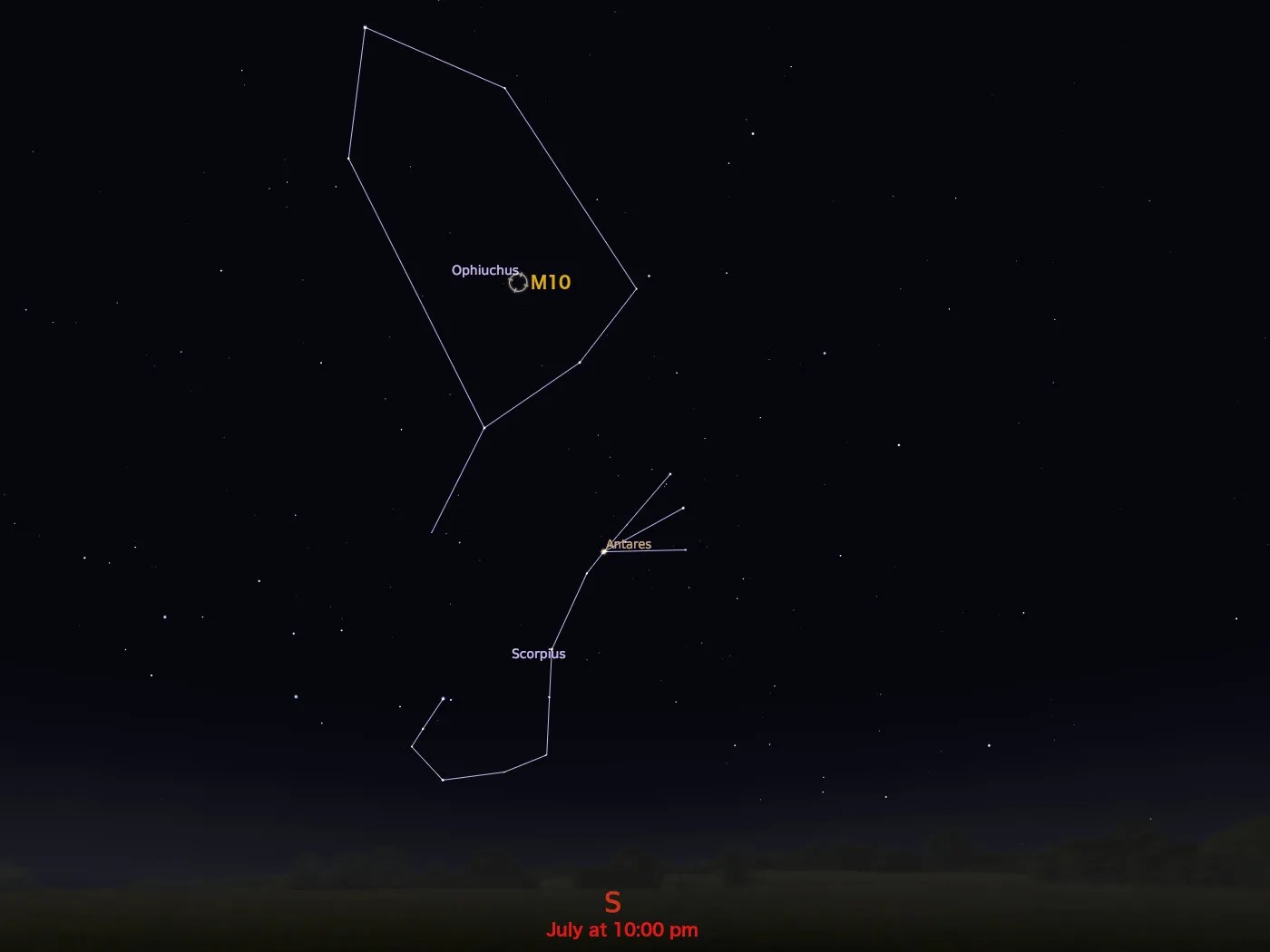Messier 10
Hubble’s image of Messier 10’s dense core holds observations taken in visible and infrared light.
Distance
15,000 light-years
Apparent Magnitude
6.4
constellation
Ophiuchus
object type
Globular Cluster

Discovered by Charles Messier in 1764, M10 is a globular cluster located in the constellation Ophiuchus. It is roughly 15,000 light-years from Earth and has an apparent magnitude of 6.4. This cluster can be spotted using a pair of binoculars and is most easily observed during July.
M10 is notable for its high population of blue stragglers — stars that appear to be far younger than their neighbors. The stars in globular clusters are thought to have formed and aged together, so they should all be roughly the same age. These anomalous, bluer stars were created either by collisions between stars or other stellar interactions. Such events are easy to imagine in densely populated globular clusters, in which up to a few million stars are tightly packed together.
Hubble’s image of M10’s dense core is made up of observations taken in visible and infrared light.
For more information about Hubble’s observations of M10, see:

Explore Hubble's Messier Catalog
The following pages contain some of Hubble’s best images of Messier objects.

Messier 1 (The Crab Nebula)
Better known as the Crab Nebula, Charles Messier originally mistook Messier 1 for Halley’s Comet, which inspired him to create…

Messier 2
Hubble's image of Messier 2 is comprised of visible and infrared wavelengths of light.

Messier 3
Messier 3 holds more than 500,000 stars.




